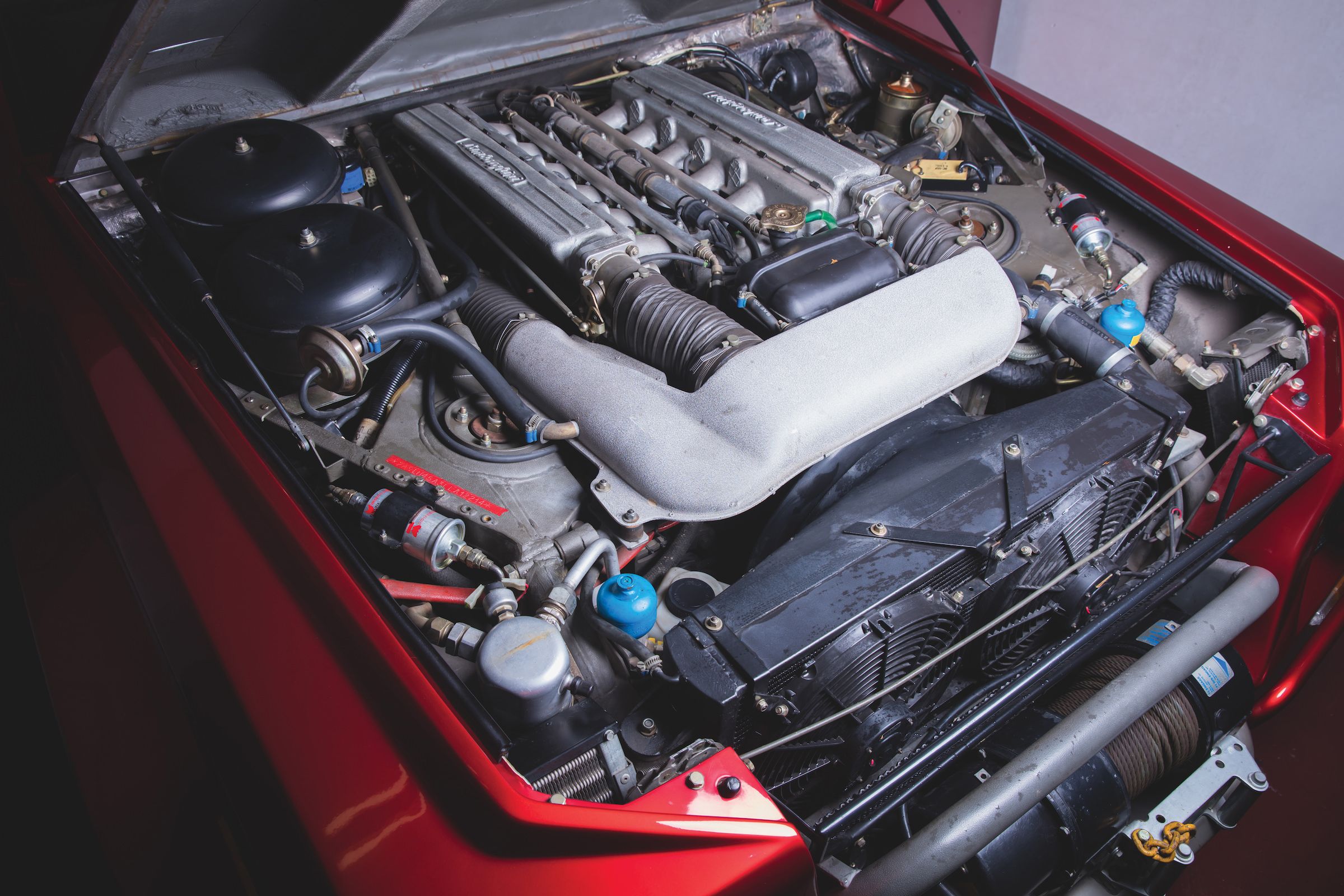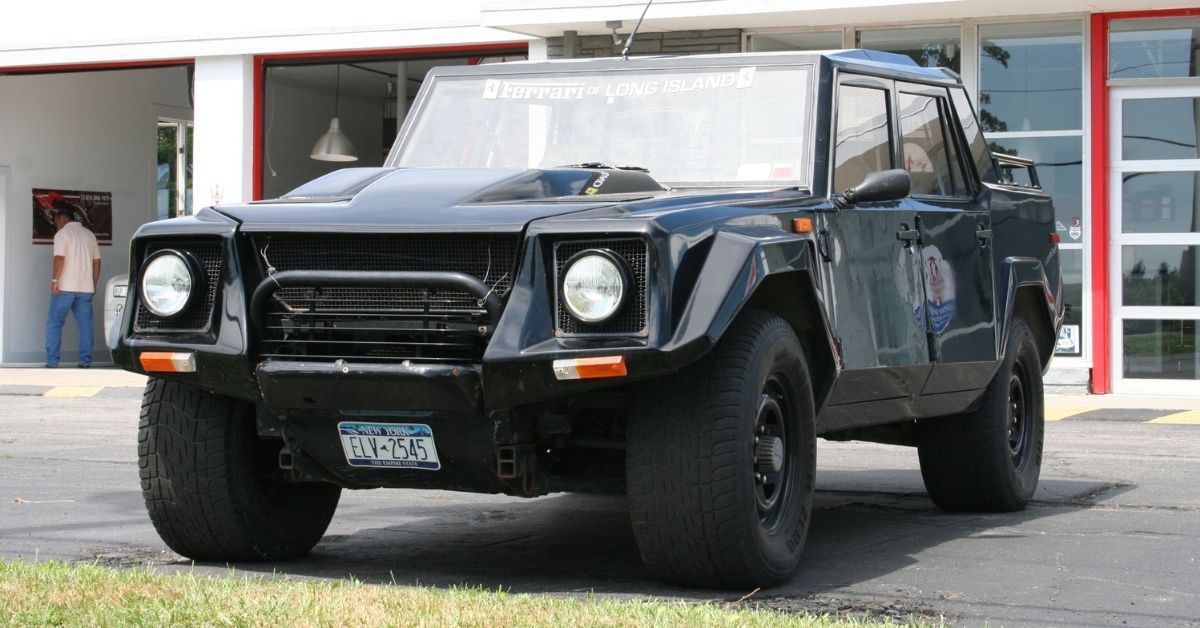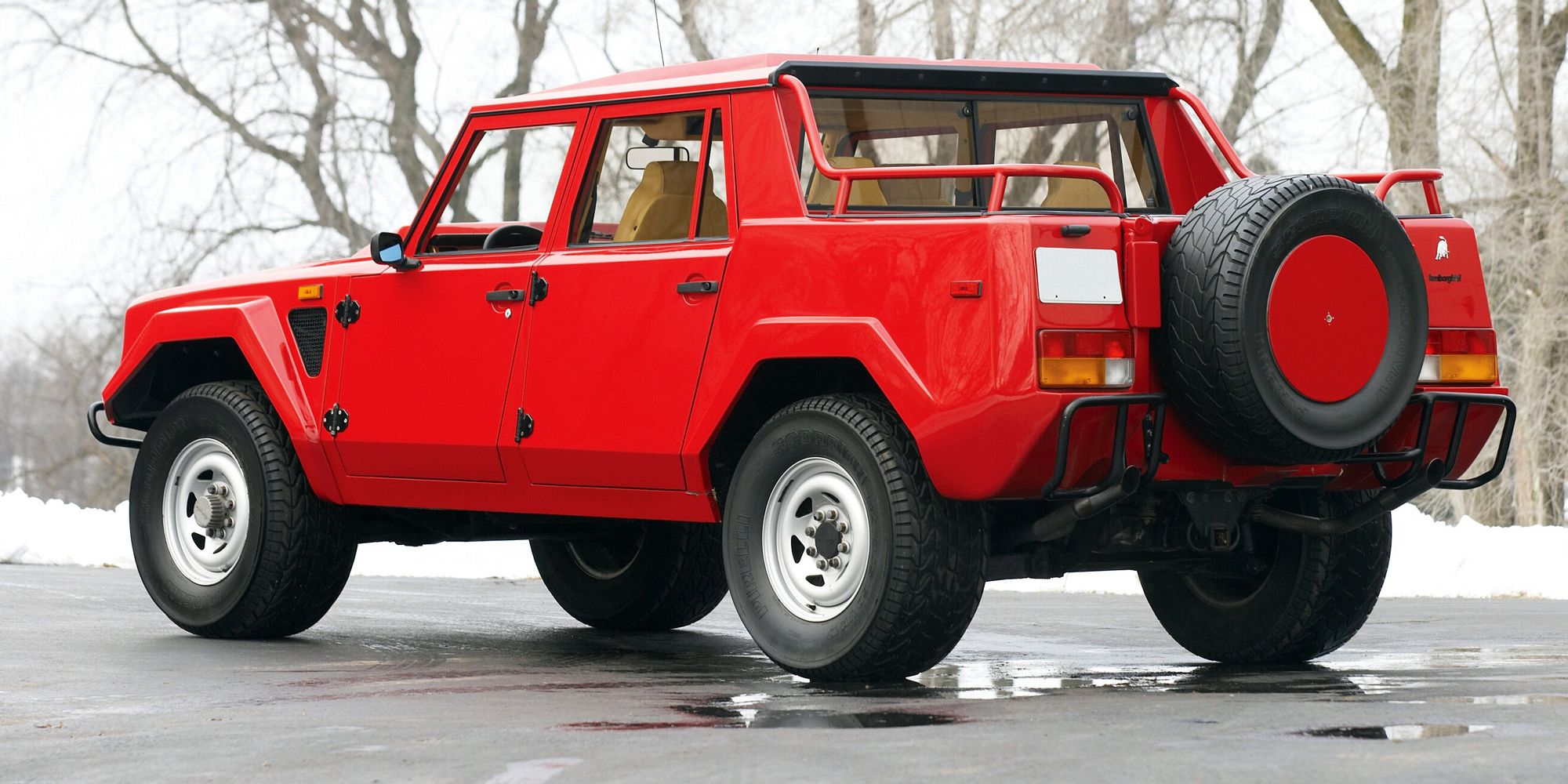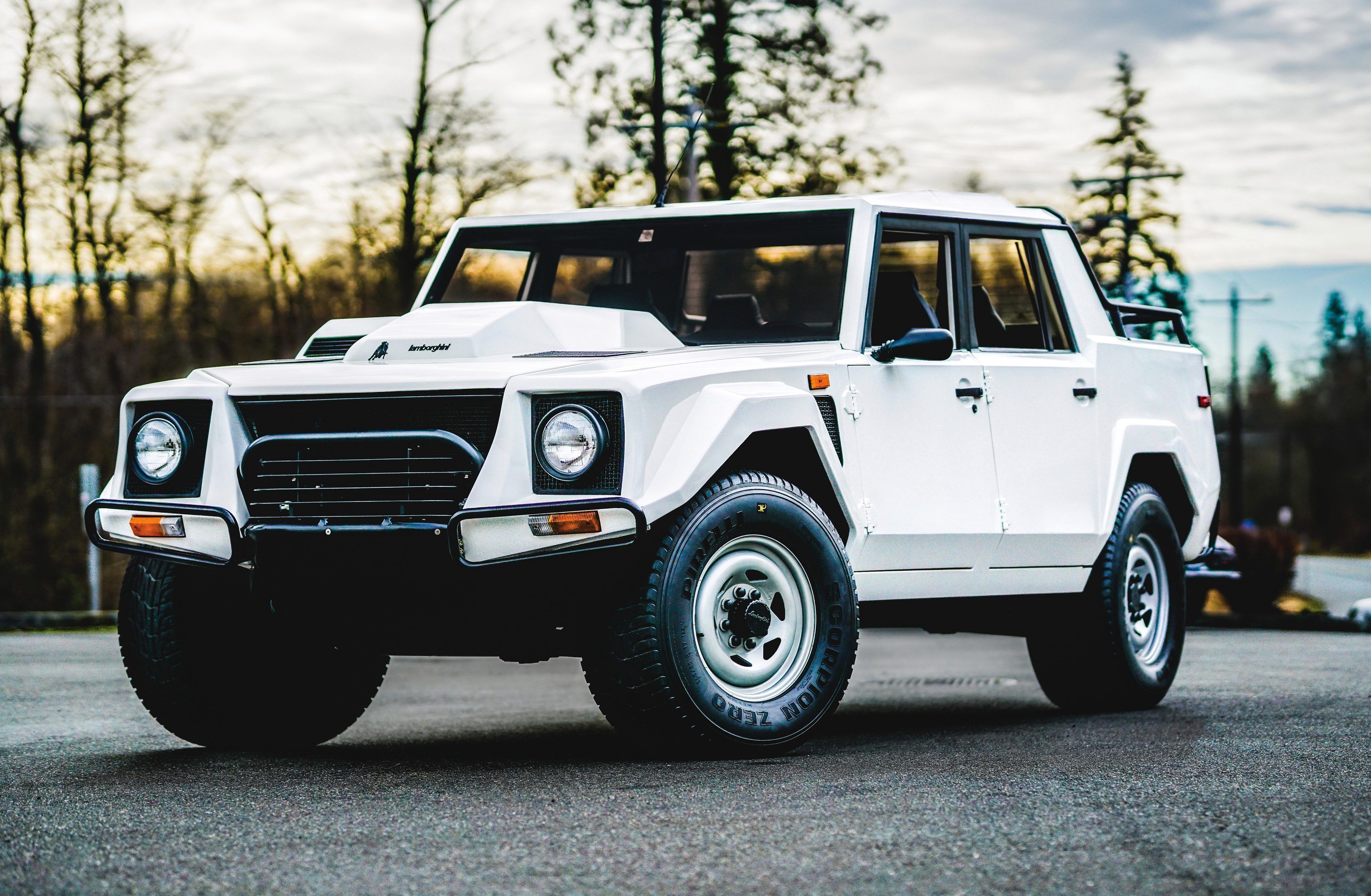It is no big news that SUVs are all the rage today, and high-end luxury SUVs are a status symbol to everyone from movie stars to high-profile athletes. Depending on what your style, taste and budget is (if there is such a thing with this loft niche), there is likely to be a high-end, high-driving, luxo-ute for you.
The Bentley Bentayga offers up equal parts style and speed, while the massive, and massively-priced Rolls-Royce Cullinan if you have half a million dollars burning a hole in your Louis Vuitton-lined pockets. But, there is one truck that unequivocally stands out in both name-recognition and speed: the Lamborghini Urus. While many people believe that the unstoppably fast Urus is Lamborghini’s first dip into the world of SUVs, it is not.
Back in the 1980s, Lamborghini decided to take their creative powers and dedicate them to building a truck that would be like nothing else the world had ever seen. After two separate attempts, they finally got it right and the code-named “Cheetah” prototype was set for production. But instead of keeping the jungle cat nickname, they decided to dub it the Lamborghini Militaria 002, or LM002 for short.
1. 1986-1993 Lamborghini LM002
8.00 / 10
- Front-Mounted Countach V12
- 76-Gallon Fuel Tank
- Run-Flat Pirelli Scorpion Tires
SPECIFICATIONS
- Model: LM002
- Engine/Motor: 5.2-Liter NA V12
- Horsepower: 444-Horepower @ 6,800 RPM
- Torque: 368 Pound-Feet @ 4,500 RPM
- Drivetrain: Four-Wheel Drive
- Transmission: 5-Speed Manual
- MSRP: $120,000 (1986)
PROS
- Lambo-Level Interior
- 11.79-Inches Of Ground Clearance
- Countach V12 Under The Hood
CONS
- 3+ Ton Curb Weight
- Paltry 8 MPG Fuel Economy
- Slow Despite Lambo Power
The Lamborghini LM002 Used The Same V12 As The Countach
Even the great-great-grandfather of the unstoppable, and frighteningly fast Urus had a predecessor. The previous prototype to the LM002, aptly called the LM001, used a Lamborghini-made body. But for one reason or another, Lambo engineers went with a rear-mounted V8 engine they borrowed from American-made AMC. Not surprisingly, very few potential customers got excited about the idea of a Chrysler engine powering their Lambo-bodied super-truck. So, after going back to the drawing board, Lamborghini decided to move the engine to a more traditional front-mounted position. But, even more importantly, they used the same engine that their world renowned superstar Countach used to inspire fantasies in children and adults throughout time.
Though it might seem like peanuts compared to today’s ridiculous 600+ horsepower Huracan, the aluminum block and heads 5.2-liter DOHC 48-valve V12 ended up making eleven fewer horsepower in the big ‘Ute, with a total of 444-horsepower at 6,800 RPM and 368 pound-feet of torque at 4,500 RPM. Forget fuel-injection, this was the 1980s, so fuel got delivered to the motor by way of a Weber 6×2 barrel carburetion setup, though fuel-injection did make an appearance in later models. That power was then funneled through a heavy-duty ZF S5-24/3 five-speed manual transmission that used a dry-single plate hydraulic clutch that could double as a single leg press machine. In order to live up to the off-roading expectations, there was a two-speed transfer case that routed power to either just the rear wheels, or to all four corners in what could either be high or low range drive.
The Lamborghini LM002 Could Run From 0-60 MPH In 7.7 Seconds3 Images
That powertrain, situated in a brand new tubular steel space frame, was then adorned with a mix of aluminum and fiberglass to create a boxy, utilitarian, yet aesthetically body, which paved the way for many SUVs of today, like the Acura MDX Type-S, in one way or another. The suspension was a fully-independent setup that used unequal length control arms and coil springs at both front and rear. In the pursuit to being the most capable off-road vehicle this side of a Sherman tank, Lamborghini commissioned world-famous tire-maker Pirelli to create special run-flat Scorpion tires that not only could tolerate the intense heat of the desert, but also run completely without air for some time, to help get soldiers to or from their destination safely. That rubber measured a staggering 345/60VR-17 at all four corners. To put that girth in perspective, the original Dodge Viper had rear tires that only measured 335 millimeters wide.
Thankfully there were no Ferrari Enzos running around causing nightmares for Lambo owners just yet. Beyond that, when it came to performance, there are a lot of angles to consider with the Lamborghini LM002, both literal and figurative. Despite have nearly 450-horsepower on tap, the LM002 tipped, and nearly broke the scales at a lofty 6,780 pounds. Not that anyone would buy a three-plus ton SUV to race, but in case you needed to get out of a jam in a hurry, the LM002 was capable of running from 0-60 MPH in a reasonable 7.7 seconds and through the quarter-mile in a so-so 16.0 seconds at 86 MPH. Keep on the gas, and you’ll eventually hit 100 MPH in 22.8 seconds, and on to a top speed of 118 MPH.
The Lamborghini LM002 Was Built For Off-Road
Those massive tires hid 13.0-inch vented disc brakes up front and 12.0-inch drums out back. Hauling down a big truck like the LM002 takes effort, and reigning in speed from 70-0 MPH took 203 scary feet. For context however, the much more modern Urus, which sports the largest brakes to ever adorn a production vehicle, and weighs almost a full ton less, still takes 149 feet to accomplish the same task… proof that despite the decades of advancement, physics is still physics.
The big Lambo had a payload capacity of just 1,000 pounds, and could tow around 8,000 pounds. Unlike the later GMC Syclone, that was a truck made to torch unsuspecting Corvettes, the LM002’s primary objective was tackling terrain, and its design reflected that in spades. With a ground clearance of 11.79-inches, and its perfect 50/50 weight-distribution book-ended by high front and rear bumpers, the LM002 was able to have an approach angle of up to 30 degrees and a departure angle of 45 degrees. Another impressive feature the Lambo offered was the massive 45-gallon gas tank (an optional 76-gallon upgrade was available) it was given to help it last long journeys out in the wild. Unfortunately, the LM002 drank more than holding an AA meeting at a tavern during happy hour, netting a best of just about 8 MPG on a good day.
The LM002 Cost Around $120,000 When It Was New
As rugged as the LM002 was on the outside, it was still a Lamborghini on the inside. Although it might seem laughable compared to something like today’s Bugatti Chiron, the LM002 had an upscale environment waiting for its passengers, no matter where they were headed. Plush leather covered almost every inch of the interior, with the exception of some wood grain trim along the dashboard, where a set of analog gauges sat behind a steering wheel that looked more like it belonged on an arcade video game than a six-figure exotic truck. The dog-leg shifter got its own walled-off section of the massive center console, presumably to keep any passengers that might get distracted by a cute photo op, or enemy gunfire.
When it was new, the Lamborghini LM002 retailed for about $120,000 depending on which options the owner chose. Unfortunately, no military operations took Lambo up on their offer for a high-end military transportation machine. That unfortunate truth resulted in somewhere around 301-328 LM002s rolling off the production line between 1986-1993, making the “Rambo Lambo” even more of an endangered species than the Ferrari F50. Today, because there are even less of these special super-trucks sitting in garages and in personal collections, the price has gone up significantly in recent days. According to Classic.com, the average resale price of an LM002 is $301,274, with a low resale price of $170,500 and a high price of a whopping $476,688.
The Lamborghini LM002 was initially created to entice militaries of the world to fork over their big defense budget contracts. But, since no one took them up on their offer, the LM002 became an incredibly unique and rare six-thousand pound sidestep for a company whose sole mission to that point was to build the sleekest and fastest cars in the world. Yet, the LM002 was first looked at as a bizarre attempt by a company trying to break into a niche they had no business being in, ended up with Lamborghini getting the last laugh. Ironically, the LM002 was simply just ahead of its time… by about four decades. Today the Urus is the pinnacle of the performance luxury SUV market, and it all began with the incredible LM002.















